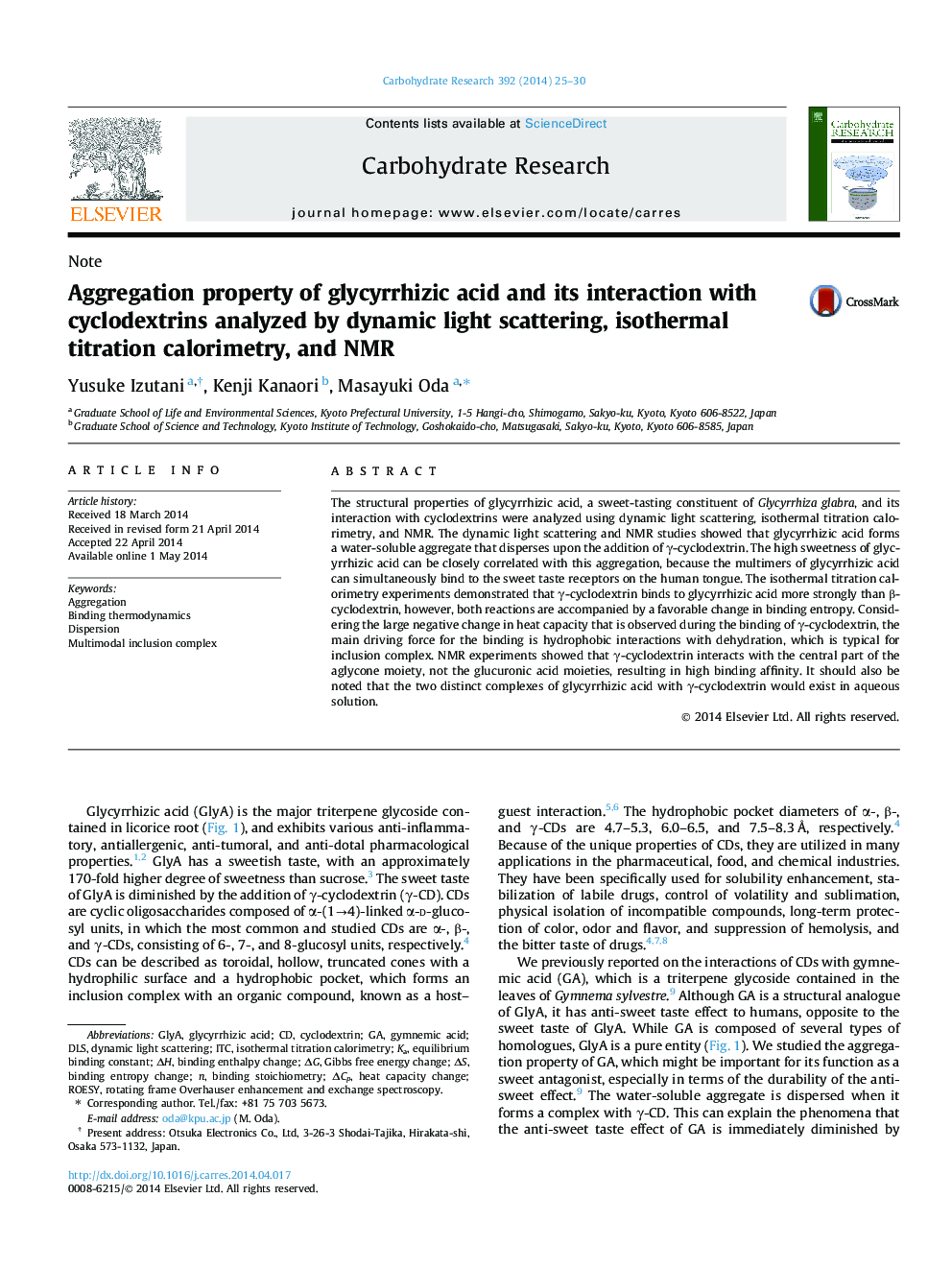| کد مقاله | کد نشریه | سال انتشار | مقاله انگلیسی | نسخه تمام متن |
|---|---|---|---|---|
| 1387635 | 1500859 | 2014 | 6 صفحه PDF | دانلود رایگان |

• The aggregate of GlyA is dispersed when it forms a complex with β- and γ-CD.
• The inclusion complexation is due to hydrophobic interactions with dehydration.
• The γ-CD inclusion complexes of GlyA are multimodal and capable of undergoing exchange.
• The combination of DLS, ITC, and NMR can elucidate the molecular properties of GlyA.
The structural properties of glycyrrhizic acid, a sweet-tasting constituent of Glycyrrhiza glabra, and its interaction with cyclodextrins were analyzed using dynamic light scattering, isothermal titration calorimetry, and NMR. The dynamic light scattering and NMR studies showed that glycyrrhizic acid forms a water-soluble aggregate that disperses upon the addition of γ-cyclodextrin. The high sweetness of glycyrrhizic acid can be closely correlated with this aggregation, because the multimers of glycyrrhizic acid can simultaneously bind to the sweet taste receptors on the human tongue. The isothermal titration calorimetry experiments demonstrated that γ-cyclodextrin binds to glycyrrhizic acid more strongly than β-cyclodextrin, however, both reactions are accompanied by a favorable change in binding entropy. Considering the large negative change in heat capacity that is observed during the binding of γ-cyclodextrin, the main driving force for the binding is hydrophobic interactions with dehydration, which is typical for inclusion complex. NMR experiments showed that γ-cyclodextrin interacts with the central part of the aglycone moiety, not the glucuronic acid moieties, resulting in high binding affinity. It should also be noted that the two distinct complexes of glycyrrhizic acid with γ-cyclodextrin would exist in aqueous solution.
Figure optionsDownload as PowerPoint slide
Journal: Carbohydrate Research - Volume 392, 17 June 2014, Pages 25–30